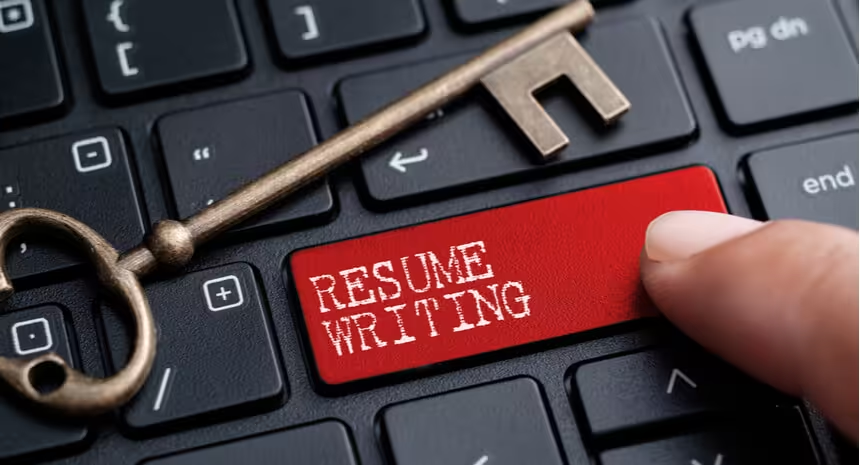As a claims adjuster, your role in assessing insurance claims, verifying information and determining the appropriate settlements is important to the success of your organization.
To get a job in this field, your resume must effectively showcase your best qualifications, such as investigative skills, attention to detail and professionalism in handling complex claims. This needs to be done in a way that stands out from other applicants and impresses the hiring manager.
With our help, you can do just that.
This guide will cover:
- Claims adjuster resume examples for various experience levels.
- Steps for tailoring your resume to emphasize your claims expertise.
- Key sections to include for a well-rounded resume.
- Tips for selecting the best resume format.
Want to create your claims adjuster resume today? Use our Resume Builder to get a professional resume in just a few clicks. Upload your existing resume or start fresh with a customizable template tailored to claims adjuster roles!
Claims Adjuster Resume Examples
Why this resume works:
-
Foundational skills
This resume showcases essential skills like data analysis, file management and claims assessment that are critical for entry-level claims adjusters, demonstrating their potential to manage a high volume of cases effectively.
-
Measurable customer service impact
The example highlights 20% improvement in customer satisfaction scores and a 95% accuracy rate when assessing claims, showing that the candidate’s skills and professionalism have a direct positive impact on client interactions.
-
Negotiation skills highlighted
With a focus on negotiation outcomes, such as when the candidate successfully settled 25 claims, saving $50K for the organization, the candidate underscores their ability to navigate settlements even at an early career stage.
Why this resume works:
-
Specialized expertise
This resume focuses on the candidate’s unique experience in collision claims and previous auto sales background, enhancing their ability to assess and negotiate auto-related claims with a keen understanding of the industry.
-
High-volume claim resolution
The candidate brings to attention their proficiency in managing hundreds of bodily injury claims, achieving company goals and yielding higher-than-targeted customer service scores, which makes them a very valuable employee.
-
Leadership and collaboration
The resume shows experience working with a large team and presenting outcomes to executives, which reflects the candidate’s leadership and communication skills, along with their ability to handle complex claims operations.
More Resume Examples
Check out our entire collection of resume examples for further help writing yours. We offer resumes for all kinds of jobs and industries so it’s easy for you to get started.
Choosing a Resume Format
The right resume format can make all the difference when presenting your qualifications. Depending on your level of experience, your claims adjuster resume will be organized in one of three ways.
Here are the three resume formats to help you figure out which one is best for you.
- Chronological: By focusing on work history in reverse-chronological order, this format emphasizes your career growth and accomplishments in claims adjustment. It allows employers to quickly see how your experience makes you a great candidate for the position. If you have several years of relevant experience, consider using the chronological format.
- Functional: The functional format can be effective for those transitioning into claims adjustment from another field or with less direct experience. This format highlights your skills and qualifications over job titles and work history. It’s a great choice if you want to focus on specific competencies while drawing attention away from a shorter or unrelated work history.
- Combination: This hybrid format suits midcareer professionals or those with diverse experience. It balances a skills-focused approach with a clear timeline of your work history. By blending elements of both chronological and functional formats, you can bring equal attention to your skills and experience.
No matter which format you choose, your resume should be clean, organized and easy to read. A well-formatted resume will also make a positive impression on hiring managers, especially if you follow standard expectations in font choice and margin size.
Choose a template
Your format should be complemented by an appropriate resume template that looks professional, is easy to read and reflects your personal taste. This helps establish your brand as a candidate, allowing you to underscore unique qualities and stand out from other applicants.
Consider designs such as a:
- Simple template: Ideal for entry-level candidates or those transitioning to a claims role, this layout emphasizes organization and readability, ensuring your skills and qualifications are found quickly.
- Modern template: Perfect for experienced claims adjusters, this design combines a polished appearance with sections to highlight both your skills and extensive work history.
How to Write a Claims Adjuster Resume in 5 Easy Steps
A great resume for a claims adjuster role requires you to put together the right combination of skills and experience, along with other qualifying elements, so that hiring managers can clearly see what makes you exceptional.
With these five steps, you will be able to write a resume that does just that and helps you progress in your career as a claims adjuster.
Step 1
Analyze the job description
Before starting your claims adjuster resume, carefully review the job description for the position you’re applying to. Employers typically include key skills, qualifications and responsibilities they expect from a candidate, making the job description an excellent resource for tailoring your resume.
Look for specific keywords and phrases in the job description. These keywords help your resume get past applicant tracking systems (ATS) that scan resumes for relevant terms.
Additionally, consider the duties listed in the job description and think about how your past experience aligns with them. This approach not only shows that you have the right skills but also proves that you’re proactive in meeting the employer’s needs.
Don’t know if your resume is ATS-friendly? Try our ATS-Resume Checker to find out today!
Step 2
Write a professional summary or objective
The opening section of your resume should be a profile that quickly conveys your qualifications and what makes you a strong candidate for the claims adjuster role.
Using either a professional summary or resume objective, you should be able to get the hiring manager’s attention in just a few sentences and encourage them to learn more about you.
- Professional summary: A professional summary is ideal if you have at least a couple of years of experience as a claims adjuster. This concise introduction should showcase your top accomplishments, skills and industry knowledge, focusing on measurable results that demonstrate your value.
- Resume objective: If you’re an entry-level candidate or transitioning to a claims adjuster role, a resume objective may be more effective. This statement should focus on your career goals, enthusiasm for the role and relevant transferable skills.
Example professional summary:
Experienced claims adjuster with over seven years in insurance claims management, specializing in property and casualty claims. Proven track record of maintaining a 98% claim accuracy rate, reducing claim processing times by 20% and identifying fraud cases that saved over $50K annually. Skilled in negotiation, investigation and customer communication to ensure fair and timely settlements.
Example resume objective:
Detail-oriented professional with a background in customer service and a recent certification in insurance claims adjustment, eager to bring strong investigation and negotiation skills to an entry-level claims adjuster role. Committed to ensuring accurate, fair settlements and supporting clients through the claims process.
Step 3
Focus on relevant skills
Every claims adjuster resume should include a skills section that highlights your core competencies. By clearly outlining your most relevant skills, you help the hiring manager quickly assess your qualifications.
Aim to provide a mix of both hard and soft skills to showcase your well-rounded abilities as a claims adjuster. This includes technical skills for job-specific responsibilities, as well as transferable skills that help you maintain professionalism in any environment.
- Hard skills are technical, job-specific abilities that you use to evaluate and process claims. These may include investigation skills, negotiation techniques or familiarity with claims management software.
- Soft skills are personal attributes that enable you to interact professionally with clients and colleagues, such as communication and problem-solving abilities. Strong soft skills are essential for claims adjusters, who need to maintain client trust and efficiently handle complex situations.
- Claims investigation and documentation
- Knowledge of insurance policies and regulations
- Negotiation and settlement techniques
- Proficiency with claims management software (e.g., Xactimate, Guidewire)
- Fraud detection and prevention
- Analytical and reporting skills
- Attention to detail
- Strong verbal and written communication
- Time management and organizational skills
- Problem-solving in challenging situations
- Empathy and patience when working with clients
- Ability to work independently and as part of a team
Match your skills with the language in the job description. This not only helps your resume pass ATS filters but also demonstrates that you possess the exact qualifications the employer is seeking.
Step 4
Work experience section
Many employers want to see evidence of your qualifications, which makes the work experience section of your claims adjuster resume essential for demonstrating how your past roles have prepared you to handle complex claims successfully.
Use this section to show hiring managers the value you’ve brought to previous employers, focusing on your most relevant achievements and contributions from your job history.
To write an effective work experience section, start each position with your job title, company name, location and dates of employment.
List your most recent job first and include bullet points to highlight key responsibilities and accomplishments. To emphasize your expertise, focus on specific achievements related to claims handling, investigation or customer service.
Whenever possible, quantify your accomplishments to provide concrete evidence of your impact. Using numbers, such as “resolved 95% of claims within policy timelines” or “saved $50K in fraud prevention,” helps make your resume stand out by reinforcing your credibility and providing a unique context for your value as an employee.
Example work experience for a claims adjuster resume:
Claims Adjuster, ABC Insurance – New York, NY
March 2018 – Dec. 2024
- Investigated, evaluated and processed an average of 75 claims per month, maintaining a 98% accuracy rate and reducing claim processing time by 15%.
- Conducted in-depth investigations to assess claim validity, identifying and preventing fraudulent claims, which saved the company over $30K annually.
- Collaborated with over 500 clients, attorneys and medical providers to negotiate settlements, ensuring fair outcomes that met company guidelines and client expectations.
- Utilized claims management software, including Xactimate and Guidewire, to streamline claims processing with a 35% decrease in documentation time.
Start each bullet point with an action verb, such as “investigated,” “negotiated” or “achieved” to make a strong impression on hiring managers.
Step 5
Education and certifications
Your education and certifications help enhance your qualifications for a claims adjuster role. This section should clearly list your degrees, relevant certifications and any specialized training that demonstrates your readiness to handle insurance claims effectively.
Begin with your highest degree, followed by the institution name and graduation date. While a specific degree isn’t always required for claims adjusters, degrees in business, finance or a related field can strengthen your resume.
Certifications are especially valuable in the insurance industry and can give you a competitive edge. Including certifications like the Associate in Claims (AIC) or Chartered Property Casualty Underwriter (CPCU) shows employers your commitment to the field and your technical expertise.
Example education and certifications for a claims adjuster resume:
Education
-
Bachelor of Science in Business Administration
University of Illinois, Urbana-Champaign
Certifications
- Chartered Property Casualty Underwriter (CPCU), The Institutes – 2021
- Associate in Claims (AIC), The Institutes – 2020
- Xactimate Level 2 Certification, Verisk – 2019
Optional Resume Sections
Professional affiliations
Memberships in professional organizations demonstrate your commitment to the industry and staying updated on best practices. If space allows, consider adding this to your resume.
Example:
- Member, National Association of Independent Insurance Adjusters (NAIIA)
Awards and honors
Awards recognize your achievements and dedication to excellence. Highlight any honors received for outstanding performance in claims adjustment or related areas.
Example:
- Claims Adjuster of the Year, XYZ Insurance – 2022
- Excellence in Customer Service Award, ABC Insurance – 2021
Training and workshops
Your commitment to professional development is showcased through ongoing training. Include any specialized courses, workshops or training relevant to the claims industry.
Example:
- Attended “Advanced Claims Investigation Techniques” Workshop, Insurance Institute – 2022
- Completed “Effective Negotiation Strategies” Training, The Institutes – 2021
resumes made with Resume Now!
Add a Cover Letter
Take the extra step to include a cover letter with your claims adjuster resume. This can significantly improve your chances of landing the job by allowing you to introduce yourself more personally and detail your most important qualifications.
If you use this space to expand on unique skills and experiences, employers will see more than just a list of qualifications. They’ll see a motivated professional ready to contribute effectively from day one.
Just make sure to go beyond simply restating your resume. Tell a story about how your past experiences provide you with the skills to be an amazing choice for the claims adjuster position and communicate your enthusiasm for the company.
If you’re unsure about how to get started, our Cover Letter Generator provides easy-to-use templates and expert content suggestions that help you create a custom letter in just a few minutes.
Take a look at our expertly crafted cover letter examples to see how you can make an impact with your words and get started today!
Key Takeaways
-
Be relevant
Tailor your resume to focus on core claims adjuster skills, such as claims investigation, policy knowledge, negotiation and fraud detection. A balanced mix of hard and soft skills will demonstrate your readiness for the role.
-
Pick an appropriate format
Select a resume that best highlights your career progression, technical skills and industry expertise. Each format has strengths depending on your experience level and career goals.
-
Quantify your experience
Stand out by including achievements that quantify your impact, like improving claim accuracy or reducing processing times. Metrics help employers quickly see your value and ability to handle complex claims.
-
Include your education and certifications
Showcase your educational background and emphasize industry-recognized certifications like AIC or CPCU, which add to your credibility and technical knowledge in claims adjustment.
-
Consider optional sections
If you have the space, sections like professional affiliations, languages, awards and volunteer experience can provide additional insights into your skills and commitment to the industry. Just remember to keep them relevant.
-
Include a cover letter
Including a cover letter gives you the chance to expand on your experience, highlight key accomplishments and express your enthusiasm for the role and the company.
More Resources for Your Resume
Last Updated: January 01, 2025
What should my resume look like?
How do I keep my resume to one page?
Was this information about Claims Adjuster Resume: Examples, Templates & Tips For 2025 helpful? Let us know!
Conor is a writer for Resume Now. He has over five years of professional writing experience and professional development training. Conor has written on a range of career development topics.
More resources

How to Write a Resume: Guide & Examples for 2025
If you re wondering how to write a resume that grabs attenti...

Should You Put Your Address on Your Resume? (Guide + 5 Example Resume Headers)
Should you put your address on your resume? We ll answer you...

Amazon Resume: Examples, Job Description & Tips
Make a resume for an Amazon fulfillment center that matches th...

Top Government Resume Examples & Writing Tips for 2025
Use our expertly crafted government resume examples and writin...

Top Librarian Resume Examples & Writing Tips
Make a librarian resume that gets interviews in 2025. Use our ...



